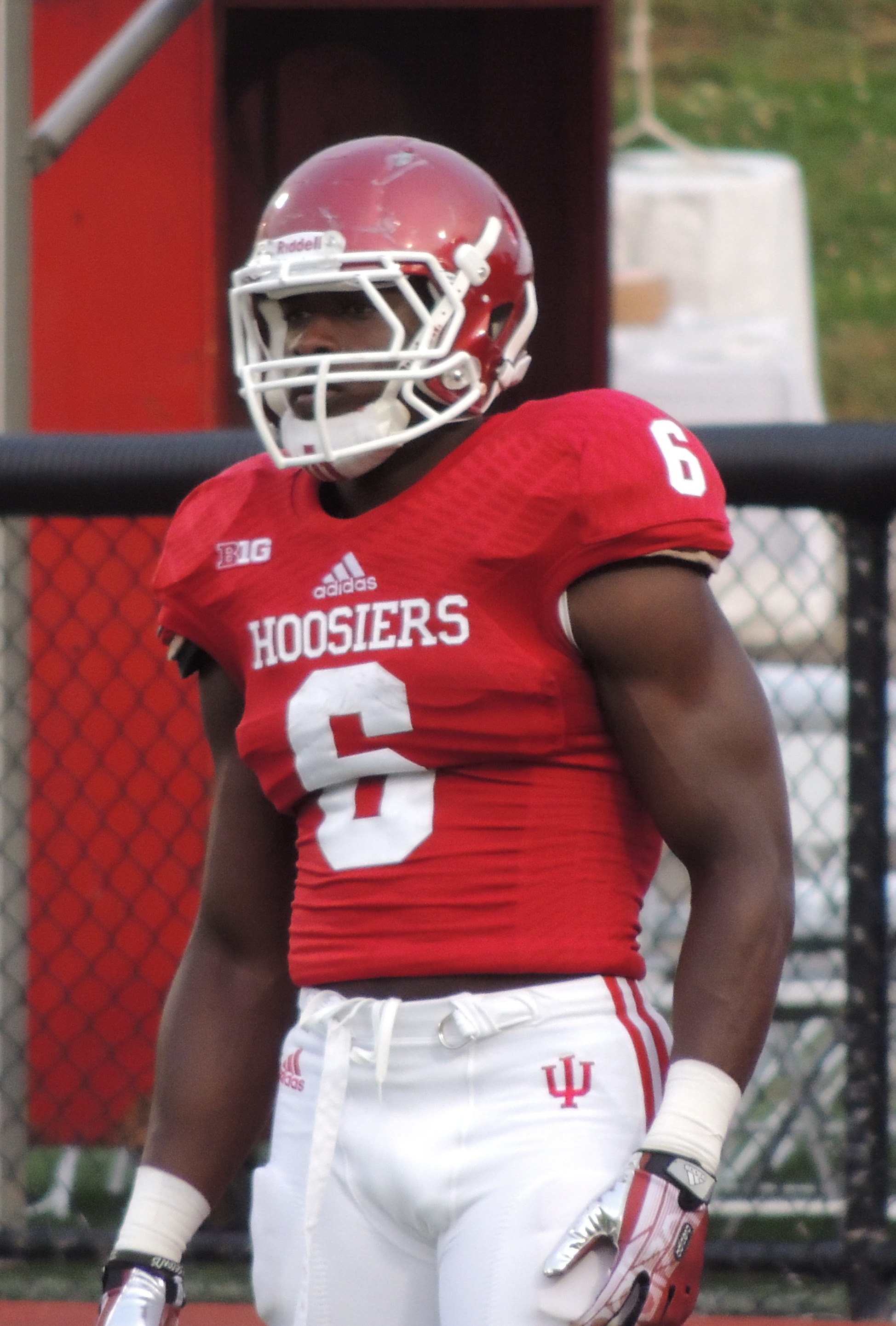Coleman’s development making huge impact for Hoosiers

By CHRIS GOFF
ISL Assistant Editor
BLOOMINGTON, Ind. – Running backs coach Deland McCullough chuckles when he remembers who Tevin Coleman used to be.
“Every year I have a guy who makes me sit up at night and say, ‘Either something’s wrong with me or something’s wrong with him,’” McCullough said. “I think back to Tevin last year. Tevin’s head was spinning.”
That’s why his main impact as a wide-eyed freshman came on special teams as a kick returner. Coleman did well, finishing third in the Big Ten at 23.6 yards per return, but never emerged as a part of Indiana’s offense. He got about four carries a game. Too often, Coleman didn’t know the plays or where to go. So he sat.

Those days are long in the review mirror. Coleman is running better. In fact, one of the reasons the Hoosiers are 3-2 is because of the rise of Coleman, who upset senior Stephen Houston for the lead rushing job and has taken Indiana’s ground attack from 130.8 yards a game in 2012 to 189 this season.
Coleman surpassed a 4-yard average last year, but he had only 51 carries. Strength, knowing the playbook and improved hands are what got Coleman more playing time. Coaches knew all along that he’s quick and explosive. Now, Coleman looks like the foundation of the Hoosiers’ backfield through 2015.
Coleman has rushed for 478 yards this season with an astounding 6.3-yard average on 76 carries. The Hoosiers have not had a 1,000-yard runner since Levron Williams in 2001. Coleman should get them over that hump. Given the chance to be a feature back, Coleman leads the team with seven touchdowns and has proved himself to be a legitimate game-breaker.
“It’s a lot of fun to watch Tevin,” defensive end Nick Mangieri said. “He’s a freak athlete. It’s good to see on Saturdays.”
McCullough said Coleman laughs about his initial struggles.
“I feel great,” Coleman said. “I’m still young. I have great vision. We get a lot of attention on our receivers. It gets me ramped up more. Once we open up that pass game it frees the run game.”
It’s pretty obvious coach Kevin Wilson prefers to throw the ball out of three- and four-receiver sets, and Coleman has better fit that finesse style of play. Houston was solid but not spectacular as the starting tailback last season. That’s because he doesn’t have explosiveness. Houston had only five runs for longer than 20 yards. Not even halfway through this campaign, Coleman already has seven carries over 20 yards.
“I expect him to make those plays and many more,” offensive coordinator Seth Littrell said. “He hasn’t exceeded my expectations at all. My expectations were very high.”
Two other aspects of Coleman’s breakthrough have to excite Hoosiers fans. First, Coleman appears to have the ability to be a workhorse, capable of absorbing the pounding on his body that comes with pushing for 20 carries a game. On Saturday, in a 44-24 victory over Penn State, Coleman ran 20 times for the first time in college. He’s confident he can carry a heavy load on a regular basis.
“I’m physically bigger,” said Coleman, who, for a back known for track-star speed, is a sturdy runner at 6-foot-1 and 205 pounds. “If you’re not strong, you don’t have that weight on you, you’ll feel your body tearing up on you.”
Second, Coleman’s versatility is allowing him be involved in the passing game. For defenses stretched thin against the Hoosiers’ spread, Coleman can be a mismatch nightmare going against a linebacker. The sophomore had four catches for 35 yards against Navy and four more for 25 yards versus Missouri.
On Saturday, Coleman put it all together, gaining a career-high 55 yards on a career-high seven receptions, four of which went for first downs. Much of the production was spontaneous.
“We didn’t know that would happen,” Coleman said. “Last year I didn’t have the hands I do now. I can catch better.”
Having pass-catching skill allows Coleman to be a third-down option. In turn, coaches can get by with Coleman as more of a solo act. Houston has found himself on the wrong end of a 70-30 split at the position. Although Houston was a touchdown machine last season, Coleman has enough power, blocking and soft hands to take away from Houston’s advantages.
With Coleman showing flashes of greatness, Wilson moved Houston to second string. Houston isn’t particularly happy about being stuck there despite a 4.7-yard average per carry last season. Still, Coleman sees the thunder of the 6-1, 230-pound Houston playing an important complementary role.
“We talk a lot about that,” said Coleman, who is friendly with Houston. “That’s my guy. We just compete in practice. We both have great talents.”
Against the Nittany Lions, Coleman, Houston and sleeper D’Angelo Roberts all were in the mix and combined for 27 carries and 153 yards on the ground. It was the type of dominant rushing attack Indiana has been missing for years.
“That’s what we have to do every game to have a balanced offense,” Coleman said.
That thought is especially true this Saturday in Indiana’s first away game of the season against Michigan State, which leads the country in rushing defense at 50.4 yards allowed per game.
“It’s hard to run against them,” Coleman said. “They have an aggressive defense.”
Not that Coleman isn’t looking forward it.
“I like road games better,” he said. “I like the white jerseys. I like to shut the other fans up. It’s just a good feeling.”
With Coleman, there are plenty of good feelings to go around now that he’s over the learning curve. Coleman sped up his education, letting him run with reckless abandon. His elusiveness is adding big plays from the backfield. To McCullough, Coleman is no longer a headache. Just a playmaker.
Goff column: Wilson, Hoosiers make right moves to vanquish Penn State
Follow Chris Goff on Twitter: chrisgoff_ISL.






